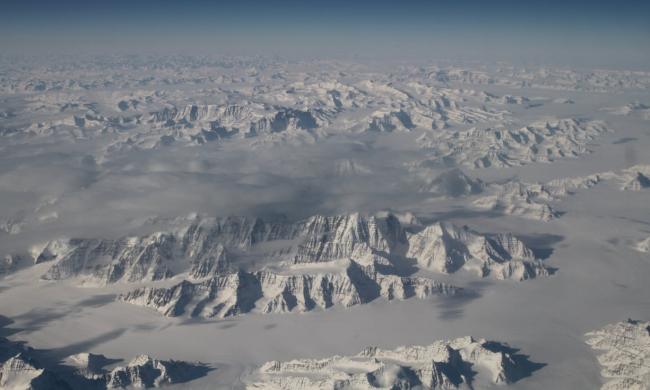The IPCC report sets out the world’s current knowledge of the impacts of 1.5C of warming and clearly shows the dangers of breaching such a limit. However, many scientists are increasingly worried about factors about which we know much less.
These “known unknowns” of climate change are tipping points, or feedback mechanisms within the climate system – thresholds that, if passed, could send the Earth into a spiral of runaway climate change.
Rising temperatures, rising risks
Tipping points merit only a few mentions in the IPCC report. Durwood Zaelke, founder of the Institute for Governance and Sustainable Development, said: “The IPCC report fails to focus on the weakest link in the climate chain: the self-reinforcing feedbacks which, if allowed to continue, will accelerate warming and risk cascading climate tipping points and runaway warming.”
Ice melting at the poles is known to be of particular danger. The Earth’s ice caps act as reflectors, sending some of the sun’s rays back into space and cooling the planet. When sea ice melts, it reveals dark water underneath, which absorbs more heat and in turn triggers greater warming, in a constant feedback loop.
Ice on land, such as in Greenland and under much of the Antarctic, may contain yet another feedback loop; when the ice melts, water percolates to the land below where it lubricates the slide of ice over rock and could accelerate the collapse of glaciers into the surrounding sea.
Bob Ward, of the Grantham Institute, said: “The IPCC summary for policymakers only mentions the west Antarctica and Greenland tipping points, which we may already have reached.”
The full report of the IPCC reflects our lack of knowledge of the full potential of tipping points, he said: “The underlying report suggests that the other tipping points are too poorly understood, or not likely to be triggered until higher amounts of warming – but given their consequences, one would expect a more risk-based approach. That is, you don’t ignore them until you know them to be impossible.”
Quick guide
What difference would restricting warming to 1.5C make?
A key finding of the new IPCC report is the dramatic difference that restricting warming to 1.5C above pre industrial levels would have on the global environment.The scientists found:
• By 2100, global sea level rise would be 10cm lower with global warming of 1.5C compared with 2C.
• Extreme heatwaves will be experienced by 14% of the world's population at least once every five years at 1.5C. But that figure rises to more than a third of the planet if temperatures rise to 2C
• Arctic sea ice would remain during most summers if warming is kept to 1.5C. But at 2C, ice free summers are 10 times more likely, leading to greater habitat losses for polar bears, whales, seals and sea birds.
• If warming is kept to 1.5C, coral reefs will still decline by 70-90% but if temperatures rise to 2C virtually all of the world's reefs would be lost
One of the problems with tipping point thresholds is that we may not know when they are reached. Robert Larter, of the British Antarctic Survey, called polar ice sheets “sleeping giants”, which if they pass a tipping point will cause devastation.
“As ice sheets melted after the last glacial period, there were times when sea level rose at a rate of more than three metres per century, an order of magnitude faster than the current rate,” he said. “This implies that there are situations in which ice sheets can melt much more rapidly than they have over the period we have been observing them. We should be very cautious about disturbing these sleeping giants.”
Another issue with melting ice is that it uncovers and destabilises permafrost. This layer is known to contain vast quantities of methane, a powerful greenhouse gas with a warming effect many times that of carbon dioxide. Melting permafrost will release that gas into the atmosphere, with unpredictable consequences.
Further unknowns include the effects of climate change on carbon sinks, such as soils and forests: higher temperatures could dry out some soils, causing them to release stored carbon into the air. But increased rainfall – a symptom of climate change in some regions – could in other areas be making it harder for forest soils to trap greenhouse gases such as methane.
Mario Molina, who shared the Nobel prize in chemistry in 1995 for his work on depletion of the ozone layer, said: “The IPCC report demonstrates that it is still possible to keep the climate relatively safe, provided we muster an unprecedented level of cooperation, extraordinary speed and heroic scale of action. But even with its description of the increasing impacts that lie ahead, the IPCC understates a key risk: that self-reinforcing feedback loops could push the climate system into chaos before we have time to tame our energy system, and the other sources of climate pollution.”
[Top photo: The north-east coastline of Greenland, one of the world’s two great ice sheets. Photograph: HANDOUT/AFP/Getty Images]

